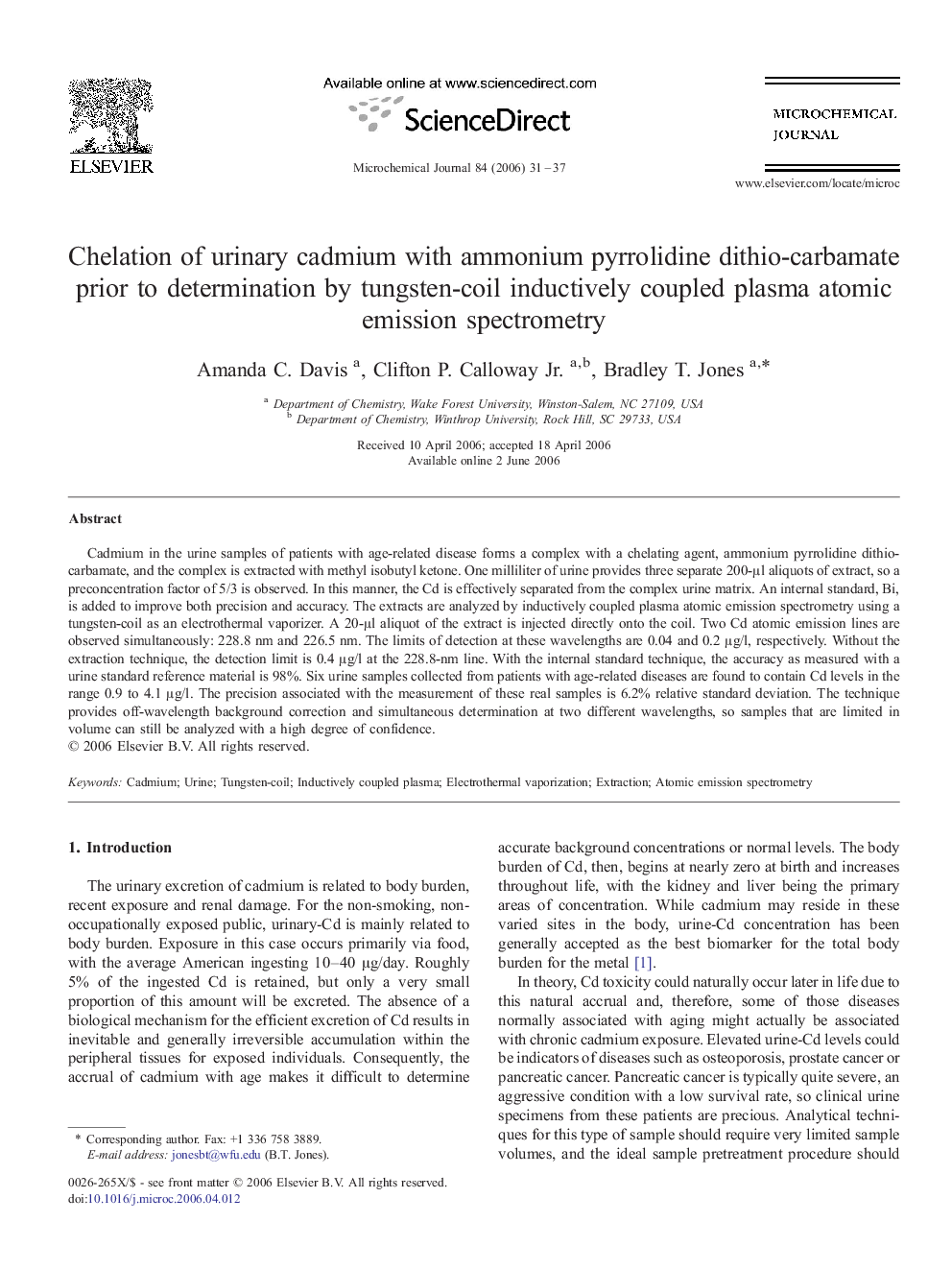| Article ID | Journal | Published Year | Pages | File Type |
|---|---|---|---|---|
| 1228429 | Microchemical Journal | 2006 | 7 Pages |
Abstract
Cadmium in the urine samples of patients with age-related disease forms a complex with a chelating agent, ammonium pyrrolidine dithio-carbamate, and the complex is extracted with methyl isobutyl ketone. One milliliter of urine provides three separate 200-μl aliquots of extract, so a preconcentration factor of 5/3 is observed. In this manner, the Cd is effectively separated from the complex urine matrix. An internal standard, Bi, is added to improve both precision and accuracy. The extracts are analyzed by inductively coupled plasma atomic emission spectrometry using a tungsten-coil as an electrothermal vaporizer. A 20-μl aliquot of the extract is injected directly onto the coil. Two Cd atomic emission lines are observed simultaneously: 228.8 nm and 226.5 nm. The limits of detection at these wavelengths are 0.04 and 0.2 μg/l, respectively. Without the extraction technique, the detection limit is 0.4 μg/l at the 228.8-nm line. With the internal standard technique, the accuracy as measured with a urine standard reference material is 98%. Six urine samples collected from patients with age-related diseases are found to contain Cd levels in the range 0.9 to 4.1 μg/l. The precision associated with the measurement of these real samples is 6.2% relative standard deviation. The technique provides off-wavelength background correction and simultaneous determination at two different wavelengths, so samples that are limited in volume can still be analyzed with a high degree of confidence.
Keywords
Related Topics
Physical Sciences and Engineering
Chemistry
Analytical Chemistry
Authors
Amanda C. Davis, Clifton P. Jr., Bradley T. Jones,
